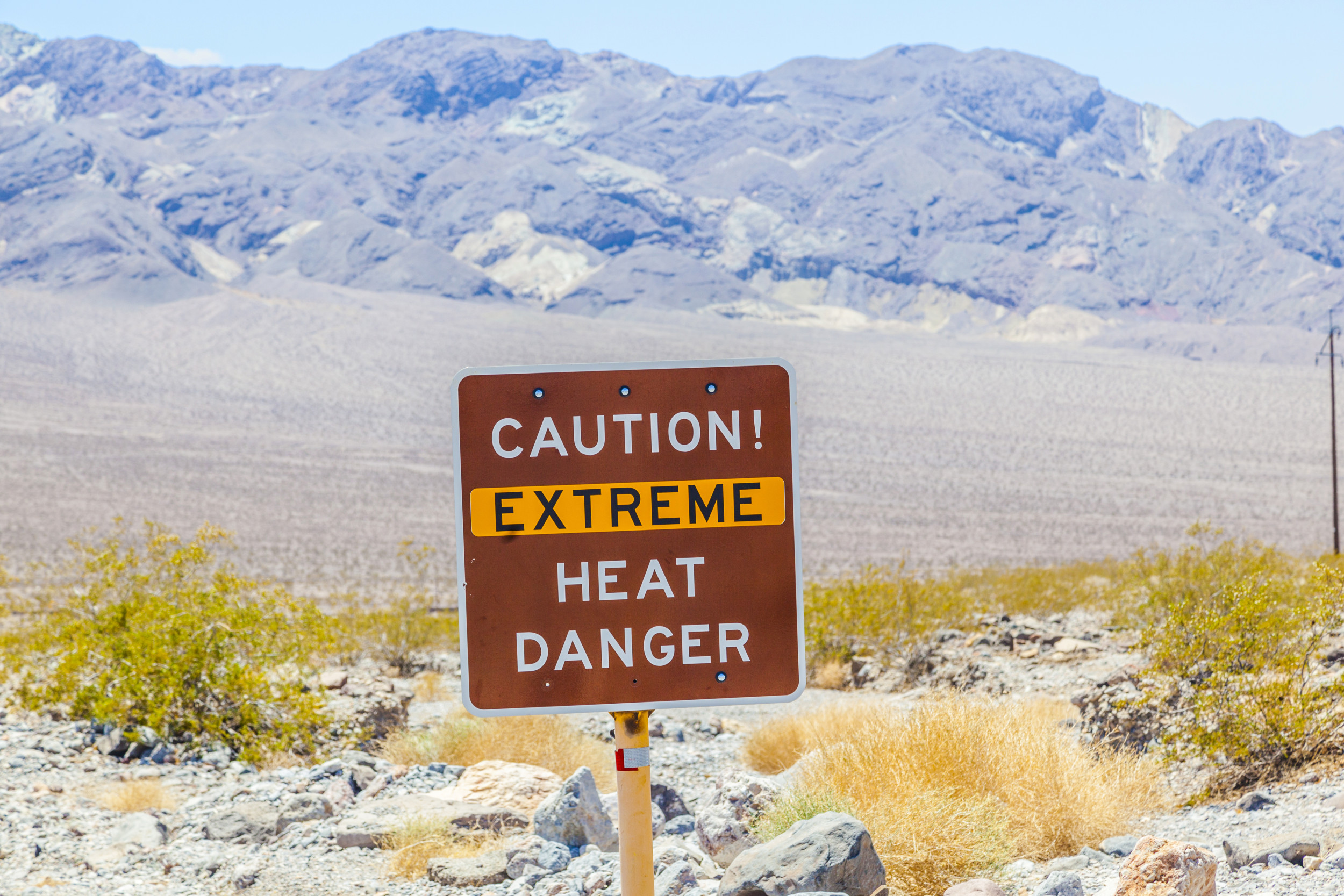Death Valley National Park officials have warned visitors not to “underestimate the dangers of extreme heat” in the wake of several heat-related deaths in the park.
A 57-year-old man died due to the effects of the park’s extreme heat on August 1, when temperatures soared to over 119 degrees Fahrenheit.
Peter Hayes Robino, a resident of Duarte in Los Angeles County, died from hyperthermia after crashing his car over a 20-foot drop.
Hyperthermia is a condition that occurs when the body is unable to regulate its temperature in response to prolonged exposure to extreme heat. Heat cramps, heat exhaustion, and heat stroke are forms of hyperthermia.
“My condolences go out to Mr. Robino’s family and friends,” Superintendent Mike Reynolds, one of the EMTs who attended the scene, said in a National Park Service (NPS) statement. “His death serves as a reminder not to underestimate the dangers of extreme heat.”
Robino, who had been walking along the one-mile Natural Bridge Trail, was noticed stumbling as he returned to his car. Bystanders offered him assistance, but he refused and reportedly did not make much sense.
“Robino got in his car and drove off a steep 20-foot embankment at the edge of the parking lot. The car rolled over and airbags deployed. A bystander left to call 911. Other bystanders helped Robino walk back to the parking lot and provided shade,” the NPS said in the statement.
ISTOCK / GETTY IMAGES PLUS
NPS emergency responders arrived at the scene at 4:10 p.m. local time, 20 minutes after the 911 call came through, but it was too late.
“The bystanders said Robino was breathing until just before the park rangers arrived. NPS EMTs started CPR and moved Robino into the air-conditioned ambulance. Robino was declared dead at 4:42,” the NPS said.
The Inyo County Coroner performed an autopsy and found that Robino had died of hyperthermia.
“Park rangers in Death Valley National Park advise that summer visitors avoid the heat by staying in or near air-conditioning, not hike after 10 am at low elevations, drink plenty of water, and eat salty snacks,” the NPS said in the statement.
Symptoms of heat exhaustion include heavy sweating, weakness, dizziness, nausea, headache, and rapid pulse. If this progresses to heat stroke, the body’s ability to cool down through sweating fails, leading to confusion, unconsciousness, and eventually organ failure and death.
Around 1,220 people die from extreme heat every year in the United States, according to the Centers for Disease Control and Prevention.
This is the second heat-related death in Death Valley this year, the first being a German man traveling via motorcycle through the park with a group of others on July 6 when temperatures hit 128 degrees. The next day, temperatures reached 129.2 degrees.
“The group of visitors was traveling by motorcycle. Once heat index of 99 F is exceeded, ambient air no longer helps provide relief,” the NPS said in a statement at the time. “Besides not being able to cool down while riding due to high ambient air temperatures, experiencing Death Valley by motorcycle when it is this hot is further challenged by the necessary heavy safety gear worn to reduce injuries during an accident.”
July 2024 was the hottest month on record in Death Valley, with an average 24-hour temperature of 108.5 degrees. The previous record was 108.1 degrees, set in 2018.
There were other nonfatal heat-related injuries that occurred in the park in July, including a woman who was taken to the hospital after becoming unable to continue hiking and passing out in temperatures between 110 and 115 degrees.
A man received second-degree burns on his feet after walking barefoot on the Mesquite Flat Sand Dunes, having lost his flip-flops. The air temperature was about 123 degrees at the time, and the ground temperature was thought to be much hotter.
“We just experienced the hottest month in history in the hottest place on Earth! Six of the 10 hottest summers have come in the past 10 years, which should serve as a wake up call,” Reynolds said in a statement on August 2.
“Record-breaking months like this one could become the norm as we continue to see global temperatures rise. Visitors to the park should plan ahead and come prepared to face extreme temperatures during the summer months.”
Do you have a tip on a science story that Newsweek should be covering? Do you have a question about Death Valley? Let us know via science@newsweek.com.
